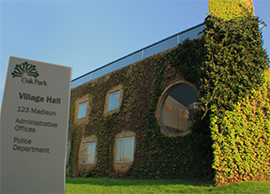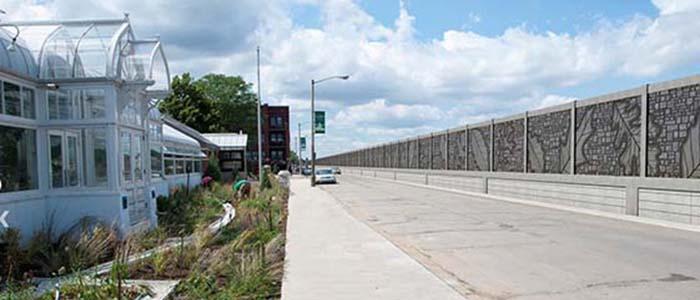Oct. 29, 2015 – Since only designated properties will have a say in whether or not noise-dampening walls are part of the planned reconstruction of I-290, Village officials want to help make sure these owners and residents have the information they need to make an informed choice.
An open-house-style informational event is scheduled for 4 to 6 p.m., Thurs., Nov. 5, at Village Hall, 123 Madison St. Aerial maps of the eligible properties will be on display and Village engineering staff will be available to answer questions about how the Illinois Department of Transportation will decide the role of noise walls in the I-290 project.
Occupants of properties selected under federal noise regulations will be asked in November to vote for or against noise walls along specific sections of the expressway. These include properties on both the north and south sides of the Expressway. Maps of the properties eligible to vote are posted on the Village website.
The Village has heard various opinions from residents, both positive and negative, since the role of noise walls was discussed in meetings about improvements to the Harlem Avenue and Austin Boulevard interchanges. While some residents have said that walls will visually and literally separate the community, others have said they see them as an effective way to reduce traffic noise.
“Village government has not advocated how residents should vote in this process,” said Oak Park Village Manager Cara Pavlicek. “But we do want to facilitate discussion and informed decision making. The actions of the property owners eligible to vote on noise walls will affect the neighborhoods near the expressway and the entire community for decades to come.”
Answers to some of the most frequently asked questions about noise walls are posted on this website.
Property owners and residents within each segment – both commercial and residential – will be mailed ballots in early November that offer the choice of voting simply yes or no to a sound wall. If 33 percent of the ballots are returned, the vote is considered valid and the decision of 51 percent of the voters within each segment will determine the outcome. If the 33-percent response rate is not met, IDOT will mail a second ballot.
Depending on the vote, one segment could get a sound wall, while another might not. The Village may have some ability to work with IDOT on the final design of the sound wall in each segment that votes yes, but not its height, which likely will be 13 feet to 15 feet. Preliminary renderings of the proposed noise walls are posted online. Once installed, the Village would be responsible for maintenance on the community side of the wall.
IDOT held three public meetings this week on the noise wall issue, including one in Oak Park Wednesday night. However, Village officials say IDOT’s reliance on postcards about the meetings mailed to the voting-eligible properties might not have been enough to ensure that recipients understand the importance of their role.
Regardless of the outcome of the voting, Pavlicek said the Village will work with residents to minimize any negative impacts and maximize potential positive attributes.
“In segments where noise walls are not supported, the Village may be able to identify alternative sound mitigation strategies such as landscaping,” she said. “For those segments that support a noise wall, the Village will focus on helping guide the aesthetics of the final design.”
The I-290 project, which has been in the works for more than a decade, entails reconstructing the Eisenhower Expressway from Interstate 88 to Racine Avenue. Plans call for widening the roadway through Oak Park to eight lanes and moving the exit and entrance ramps to the right side of the expressway at Harlem Avenue and Austin Boulevard.
Improvements to the expressway through Oak Park will remain within the current right of way, according to state transportation officials.
With actual construction likely still years away, Village officials are negotiating for significant improvements with lasting community benefits. A major goal, they say, is to eliminate many of the original design flaws that complicated traffic and pedestrian movements at intersections and mass transit connections.
More information on the Eisenhower Expressway reconstruction project is posted at www.oak-park.us/eyeontheike.











